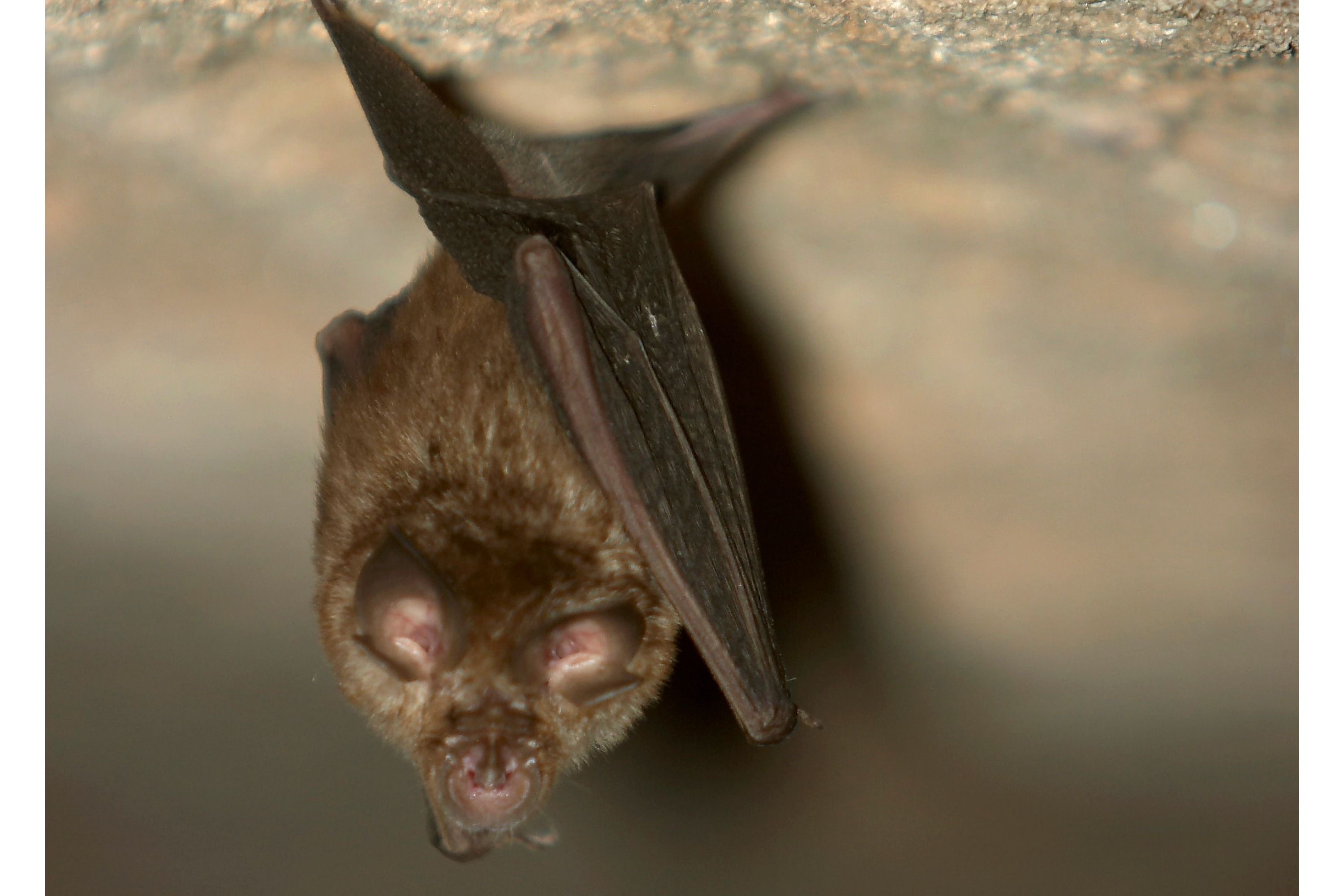Mexican free-tailed bat
(Tadarida brasiliensis)

Description
The Mexican free-tailed bat or Brazilian free-tailed bat (Tadarida brasiliensis) is a medium-sized bat native to the Americas, regarded as one of the most abundant mammals in North America. Its proclivity towards roosting in huge numbers at relatively few locations makes it vulnerable to habitat destruction in spite of its abundance. It has been claimed to have the fastest horizontal speed (as opposed to stoop diving speed) of any animal, reaching top ground speeds over 101 mph (162 km/h); its actual air speed has not been measured. The Texas Legislature designated the Mexican free-tailed bat the state mammal (flying) in 1995. The Mexican free-tailed bat was described as a new species in 1824 by French zoologist Isidore Geoffroy Saint-Hilaire. Geoffroy placed it in the now-defunct genus Nyctinomus with a binomial name of Nyctinomus brasiliensis. The holotype had been collected in Brazil. Molecular sequence data indicate T. brasiliensis's closest relatives are the sister species Sauromys petrophilus of South Africa and Tadarida aegyptiaca of Africa and South Asia. These three species form a clade believed to be about 18 million years old. Mexican free-tailed bats are typically 9 cm (3.5 in) in length and weigh around 7–12 g (0.25–0.42 oz) with females tending to be slightly heavier than males by 1-2 grams for increased fat storage to use during gestation and nursing. Their tails are almost half their total length and stretch beyond the uropatagium, giving them the name "free-tailed" bats. Their ears are wide, rounded, and large compared to their heads, nearly meeting at the front of the face, but distinctly not joined at the midline and projecting anterodorsally from just before the muzzle to the back of the head. They use their large ears to help them find prey using echolocation. T. brasiliensis is distinguished among North American Tadarida bats in possessing deep wrinkles on the upper lip and in having a Z-shaped upper third molar, which is used for grinding insects. These individuals possess canines which are larger in males than in females. The wings are elongated and narrow with pointed tips, making them well-equipped for quick, straight flight patterns. Their fur color ranges from dark brown to gray. The Mexican free-tailed bat's large feet have distinct long, white bristles.
Taxonomic tree:







